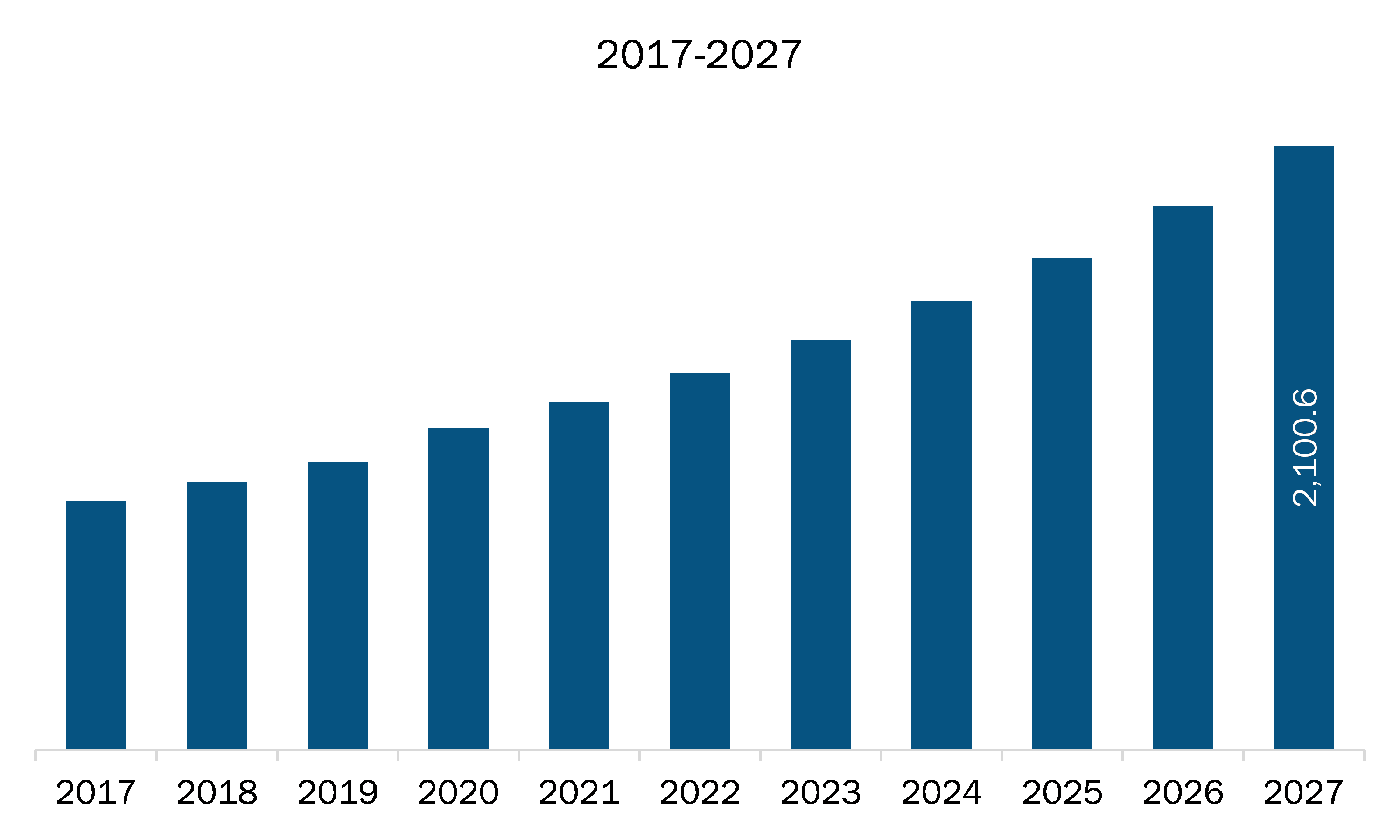The music streaming market in Asia Pacific was valued at US$ 6,963.5 Mn in 2019 and is projected to reach US$ 13,975.9 Mn by 2027; it is expected to grow at a CAGR of 8.9% from 2020 to 2027.
The scope of the digital music streaming websites is taking over the musical scenario. Owing to the availability of cloud technology, regional music offerings, increased smartphone adoption, advanced streaming applications, and lesser cost of data are some of the major aspects transforming the entire landscape of music streaming. Spotify, Apple Music, Deezer, Amazon Music Unlimited, and YouTube Music are some of the prominent online music streaming services prevailing in the market. The application of music platforms is majorly adopted within the age group up of 18to 30years, as the individuals of this group are willing to invest high value on music streaming. Targeting new demographics would potentially raise service subscriptions and revenue of the providers.Factors such as demand for multiple digital music platforms and rising number of music subscribers will drive the growth of Asia Pacific Music Streaming Market. Additionally, consistent increase in on-demand streaming and availability of regional content on digital platforms will help the market to further grow and provide growth opportunities to the providers prevailing in the music streaming market. On the contrary, due to the availability of pirated channels and free music platforms, the number of subscribers might decline and can negatively impact on the music streaming market. Furthermore, many music streaming service providers offer an unpaid trial period to gain traction of more individuals. Additionally, to remain competitive in the market, timely updates and advancements are made in the digital music platform by the music streaming service providers to sustain in the market. For instance, Amazon provides high-quality tier, known as Amazon Music HD, in a bid for the Tidal’s audiophile niche quality sound.
Along with the introduction of digital and cloud system, the scope of music streaming platforms and on-demand streaming has flourished with user inflow. Continuous technological developments are taking place across the world with an aim to cater music subscribers in a better manner. The subscription model is creating a significant impact on the development of APAC music streaming market. The music streaming service providers are offering region-specific original music to gain attention of customers and to multiply the number of subscriptions. With booming penetration of music streaming in various countries of the APAC, the need to have regional content is flourishing. As the music streaming services are accessible on various platforms for cross-device access, the scope of on-demand streaming is anticipated to benefit Amazon, Gaana.com, and Spotify. The increasing adoption of on-demand streaming will encourage the music streaming service providers to offer an option of regional content.
The government of Asia Pacific countries is taking possible steps to reduce the effects of coronavirus pandemic by announcing lockdown. China was the first country with COVID -19 confirmed cases. However, China has emerged from a 2-month containment phase and moved into the mitigation stage. The COVID-19 outbreak in China negatively impacted Tencent Music Entertainment, China’s largest online music business. However, due to the containment phase, the significantly gained profit due to the increase in the number of paid subscribers. The subscription was traditionally not a dominant business model for Tencent Music Entertainment. So, the acceleration in paying subscriber numbers was welcomed by the company’s management. They rose 70% YoY to reach 42.7 million at the end of March, now representing 6.5% of the company’s monthly users.

- This FREE sample will include data analysis, ranging from market trends to estimates and forecasts.
APAC Music Streaming Market Segmentation
APAC Music Streaming Market, by Content Type
- Audio Streaming
- Video Streaming
APAC Music Streaming Market, by Streaming Type
- Live Streaming
- On-Demand Streaming
APAC Music Streaming Market, by End-User
APAC Music Streaming Market, by Country
- China
- Japan
- South Korea
- India
- Australia
- Rest of Asia Pacific
APAC Music Streaming Market-Companies Mentioned
- Amazon.com, Inc
- Google LLC
- Deezer
- Apple, Inc.
- Spotify Technology S.A.
- JOOX
Asia Pacific Music Streaming Report Scope
| Report Attribute | Details |
|---|---|
| Market size in 2019 | US$ 6,963.5 Million |
| Market Size by 2027 | US$ 13,975.9 Million |
| Global CAGR (2020 - 2027) | 8.9% |
| Historical Data | 2017-2018 |
| Forecast period | 2020-2027 |
| Segments Covered |
By Content Type
|
| Regions and Countries Covered | Asia-Pacific
|
| Market leaders and key company profiles |
- Historical Analysis (2 Years), Base Year, Forecast (7 Years) with CAGR
- PEST and SWOT Analysis
- Market Size Value / Volume - Global, Regional, Country
- Industry and Competitive Landscape
- Excel Dataset



Report Coverage
Revenue forecast, Company Analysis, Industry landscape, Growth factors, and Trends

Segment Covered
Content Type, Streaming Type, End User, and Country

Regional Scope
North America, Europe, Asia Pacific, Middle East & Africa, South & Central America

Country Scope
Australia, China, Japan, South Korea
Trends and growth analysis reports related to Technology, Media and Telecommunications : READ MORE..
- Amazon.com, Inc
- Google LLC
- Deezer
- Apple, Inc.
- Spotify Technology S.A.
- JOOX
 Get Free Sample For
Get Free Sample For